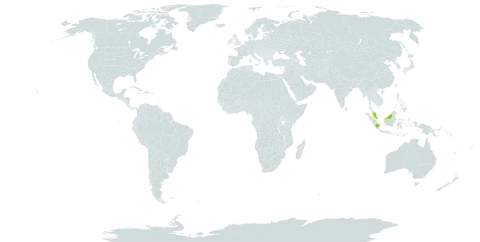Tree up to 30 m high and 60 cm Ø. Bark fissured, sometimes flaky. Buttresses occasionally present. Young parts puberulous or pubescent, sometimes glabrescent. Leaves usually with 2-3 pairs of leaflets; petiole, rachis and petiolules puberulous, sometimes glabrescent. Leaflets thin-coriaceous, shining and glabrous above, glabrous or sparsely puberulous beneath; elliptic, lanceolate, rarely obovate-oblong, 5-13½ by 1½-6½ cm; base symmetric, cuneate; apex short-acuminate; nerves 9-11 pairs, distinct or faint on both surfaces; veins finely reticulate, distinct below, visible or obscure above; petiolules grooved or the margins incurved above, lateral ones ½-l cm, terminal one 1½-2½ cm. Panicles up to 55 cm long, pubescent, loosely branched, branches up to 25 cm; bracts triangular, 2-5 mm long, usually densely hairy outside and slightly hairy inside; pedicels 0-⅔ mm. Flowers white. Calyx 3-4½ mm long, densely hairy on both surfaces; lobes triangular, 2-3 mm long. Petals obovate-oblong or oblong, 3-6 by 1½-2 mm, sometimes sparsely hairy outside. Stamens inserted at the base of the disk, 3-3½ mm; anthers oblong, ¾-l mm long; sterile stamens in ♀ c. 2 mm. Disk pulvinate and 4-grooved in ♂, l⅔-2 mm Ø; discoid in ♀, 2½-3 mm Ø. Ovary conical, c. 2 mm Ø; style c. 1¾ mm; stigmas capitate. Drupe ellipsoid, 4-6 by 2 cm; apex attenuate, sometimes beak-like; enlarged calyx pubescent on both surfaces, tube c. ½ cm long, lobes (or wings) narrowly oblong, 3½-5 by ½-1¼ cm. Seed ellipsoid, 1¾-3 by l-1½ cm.
Lowland forest, sometimes in swamp forest, up to 200 m. Fl. March-April; fr. Febr.-March, July-Nov.

